This article is for helicopter pilots to help understand and mitigate the risk of weather threats and inadvertent flight into IMC conditions. It is based on the EHEST Leaflet HE 13 Weather Threat for VMC Flights and other sources.
Weather and Inadvertent entry into Instrument Meteorological Conditions (IIMC) is a top killer!
Weather and Inadvertent entry Into Instrument Meteorological Conditions (IIMC), also known as Unintended Flight into IMC (UIMC), by non-Instrument Flight Rules (IFR) qualified pilots is the number 2 killer in aviation, including for Rotorcraft.
This article helps you understand aviation weather, including the appropriate threat assessments and strategies to adopt in relation to pre-flight and in-flight operation, for a helicopter flight to be conducted under Visual Meteorological Conditions (VMC).
Weather forecast and in-flight reassessment
Weather forecasts allow identifying the anticipated weather and related threats and put in place a strategy to mitigate those threats when preparing the flight. However, a forecast only describes what is most likely to happen. You must account for possible changes and consider other possible outcomes associated with particular weather patterns. It is not rare for in-flight weather to differ from the forecast weather. When this occurs, you must recognise the unanticipated threat of deteriorating weather and put into place a timely strategy.
Which weather criteria are relevant?
Relevant weather criteria include:
- Air mass
- Pressure patterns: anticyclones (high pressure) and depressions (low pressure)
- Cloud patterns
- Visibility: ground from the air (slant) and ground visibility (horizontal)
- Wind: surface wind velocity, wind shear or wind gradient and microburst
- Turbulence
- Precipitation: rain, freezing rain, snow, drizzle, hail, sleet
- Ice: clear ice or glaze ice, rime ice, cloudy or mixed ice, frost ice and Supercooled Large Droplet (SLD) ice
- Lightning
These factors are developed in the EHEST Leaflet HE 13 Weather Threat for VMC Flights and EGAST Leaflet GA 3 Weather Anticipation. Refer also to the FAA General Aviation Pilot’s Guide to Preflight Weather Planning, Weather Self-Briefings, and Weather Decision Making, one of the most comprehensive source of weather information.
Certain weather-related factors affect aircraft performance, like air mass and density (which depends on pressure, temperature and humidity) and density altitude (combined effect of pressure altitude and temperature), and wind. Certain non-weather factors also affect aircraft performance, like aircraft mass, ground effect, and slope and surface. Refer to the EHEST Leaflet EHEST Leaflet HE 12 Helicopter Performance.
Carburettor icing
Many accidents, in light General Aviation helicopters, have been attributed to engine stoppage due to carburettor ice. When used properly, the carburettor heat and carb heat assist systems will prevent carburettor ice (Ref. Robinson Safety Notice SN-25).
Always consider how carburettor icing probability is affected by atmospheric factors such as Dew Point depression, temperature and relative humidity, see chart below:
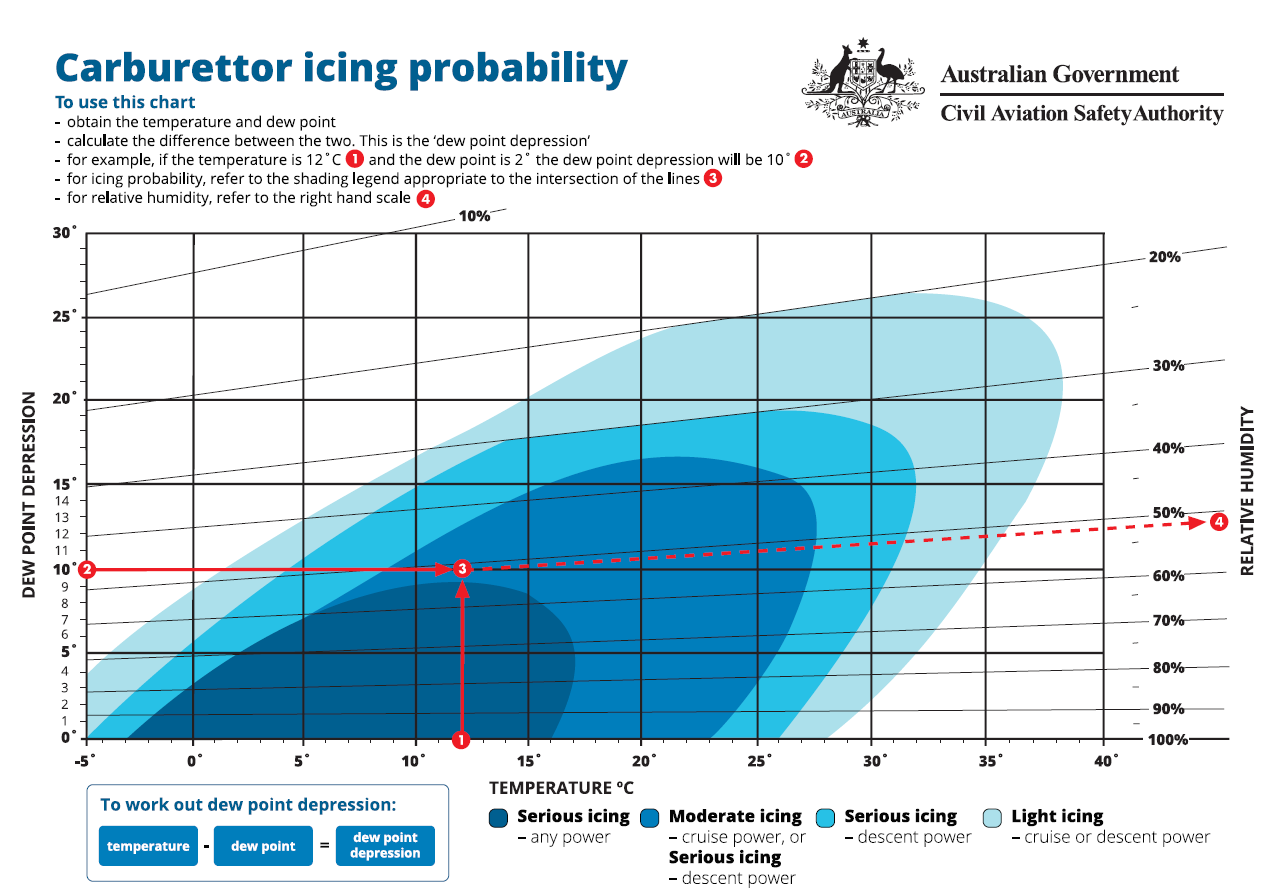
The EGAST GA 5 Piston Engine Icing provides additional useful information about carburettor icing.
Clouds
All clouds are a threat to non-Instrument Flight Rules (IFR) qualified pilots. Most helicopters are not certified to fly in icing conditions. Even for IFR qualified pilots flying on an IFR certified helicopter, an inadvertent loss of external references can lead to loss of control.
Cumulonimbus clouds are dense vertical clouds associated with thunderstorms and atmospheric instability. They are a deadly threat to aviators: never fly into a cumulonimbus, even if IFR qualified!

You must also avoid shelf clouds forming at an early stage of a thunderstorm!
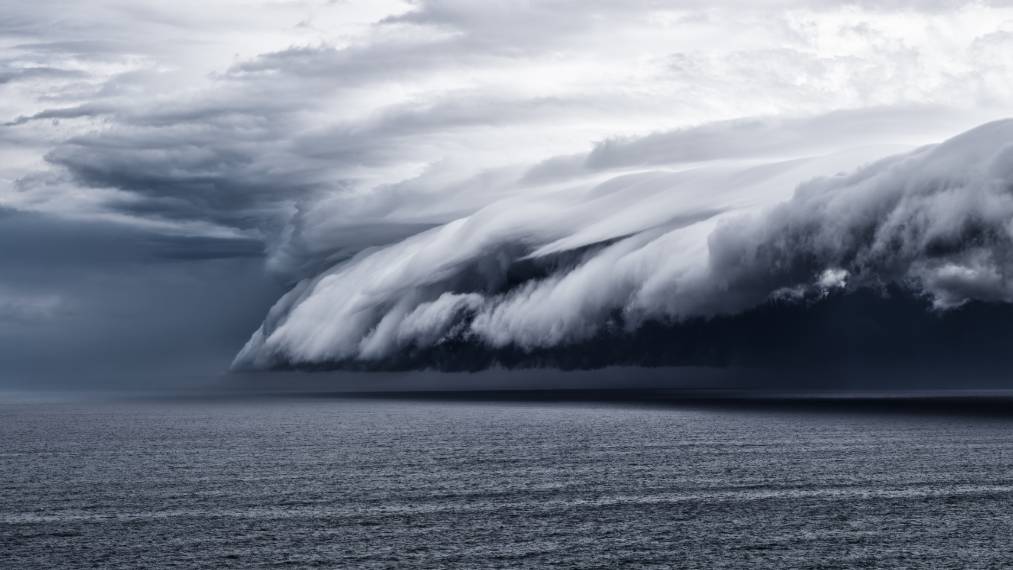
How to mitigate weather risks?
Prepare your flight thoroughly, and update your situational awareness and plan as the flight unfolds
Get and study weather reports, compare actual weather with the forecast and update situational awareness and flight strategy accordingly. Check the area forecast for your route, and also Terminal Aerodrome Forecast (TAFs) and Meteorological Aerodrome Reports (METARs) for all aerodromes you expect to pass, and which might be useful as diversion aerodromes.
Know the weather minima and limits to be applied by helicopter pilots
Refer to the Standardised European Rules of the Air SERA.5001 VMC visibility and distance from cloud minima and SERA.5010 Special VFR in control zones. Even if in some conditions, helicopters may be permitted to operate with 800 m flight visibility, check if you really need to perform this flight.
Use modern technology
Modern technologies allow displaying current and forecast ceiling and visibility levels 24/7, as well as other low level adverse weather conditions and can provide real-time information on various types of precipitation events happening on the flight path, such as rain, snow, etc. Applications on tablet and Smartphone also allow sending flight plans in advance to weather service experts. Integration with flight planning applications, which can overlay weather onto aeronautical charts, enable receipt of weather warnings and alerts during flight to avoid such hazardous areas.
However, know and understand the technology limitations! Weather information shown on the screen does not always reflect reality and actual conditions could be worse than shown on the screen! Weather images shown on weather-apps may not be a true depiction of reality, because of radar coverage limitations. Be ready to meet worse conditions. Complement weather-radar information with other weather information sources. In-flight, look out and assess in real-time how the weather evolves. See for instance the EASA Sunny Swift Issue 12 Weather radar information.
Contact Flight Information Service (FIS) and Aerodrome Flight Information Service (AFIS)
FIS is a form of Air Traffic Service (ATS) and is available to any aircraft within a Flight Information Region (FIR). Services may include the provision of weather-related information, both reported and forecast, for example SIGMET (Significant Meteorological Information) and AIRMET (Airman's Meteorological Information), weather‑reports en‑route and/or for destination and alternate aerodromes.
In the countries where FIS is provided by Air Traffic Control units, for instance in northern Europe, you will be talking to a controller. Remember that the provision of ATC always takes precedence over the provision of FIS. Notify the FIS‑unit before leaving its frequency. It also avoids unnecessary alerting phases!
In many countries throughout Europe, an Aerodrome Flight Information Service (AFIS) is provided at airfields where, despite not being busy enough for full air traffic control, the traffic is such that some form of service is necessary. In contrast to ordinary FIS‑frequencies, two-way radio communication is usually mandatory at AFIS‑aerodromes. Both AFIS and FIS use the radio call sign “information”, so be aware of whom you are talking to and what level of service is available at a given station. Refer also to the EGAST Leaflet GA 9 Flight Information Service (FIS).
Build options for your flight and make informed operational decisions
As emphasised in the FAASTeam Use of Weather Information #Flysafe blog (with video), having weather information is only part of weather-related decision making. Knowing how to acquire and interpret weather-related information, build options for your flight, and make informed operational decisions is essential for a safe flight.
Consider applying for an Instrument Rating (IR) – Helicopter
EASA Sunny Swift Issue 11 Easier and safer flying in IFR illustrates the advantages of flying IFR for fixed wing GA pilots.
Helicopter pilots are however facing the following risks:
- IFR flying can only be performed in an IFR-certified helicopter. In most cases only twin engine helicopters incorporate appropriate and proven IFR provisions and features. The biggest danger is that an IFR rated pilot will try to fly in IMC in a VFR-only helicopter: “I have the license so I know how to do it!” even if the helicopter is not certified for IFR. Never fly IMC in a helicopter not certified for IFR operations!
- Flying IMC in a helicopter is more demanding than in an aeroplane. Getting the rating only once could increase the chance that the pilot would attempt to fly in worse conditions than what he is capable to master. Flying IFR in a helicopter requires continuous practice to cope with helicopter specific aspects such as stability, multi-tasking control capabilities including communication, approach flying technique, etc.. If you know that you are not able to fly IMC, think well ahead what to do when weather starts deteriorating, not when you are already in marginal VFR. Never fly in IMC if lacking practice! Do not let you get caught even close to the limits!
Never stop training! Material available from both Airbus Helicopters and Leonardo
Education and training programmes addressing weather, either as a primary topic such as the Airbus Helicopter IIMC Course or as part of a related subject, like the Leonardo Helicopters CFIT Education Programme, will help you develop competences that can make a difference.
This Leonardo CFIT Education Programme includes subjects like human factors (Crew Resource Management and Threat and Error Management) affecting pilot performance in marginal weather, use of automation and avionics, use of TAWS and EGPWS, Inadvertent Instrumental Meteorological Ingress Procedure, marginal weather conditions navigation scenarios, and IFR recovery:
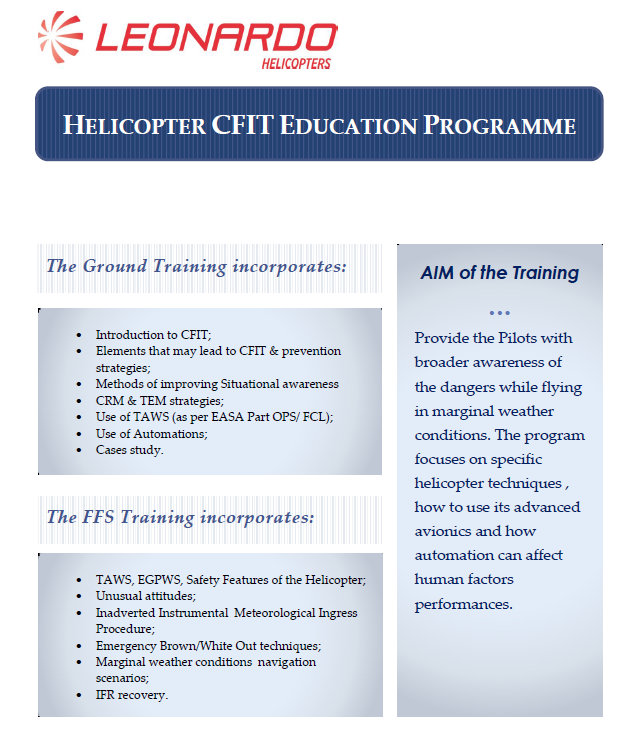
Good Practices
These good weather-related practices will help you avoid weather and IIMC related accidents and keep you safe:
- Plan your flight thoroughly.
- Get free information and weather Apps on the internet: just search on the internet with the keywords “Weather Apps for Pilots”.
- Use modern technology but know and understand the limitations.
- Understand weather patterns and their likely effects on your flying.
- Always obtain an aviation forecast.
- Expect conditions to be worse than forecast.
- Know how to perform a weather briefing. See for instance the EASA Sunny Swift Issue 17 Weather briefing process.
- Only commence or continue a VMC flight if the information available indicates that at the place of departure, along the route and at the intended destination, conditions will be at or above VMC minima.
- Look for and consider PROBs (Probabilities of Precipitation), TEMPOs (temporary used for any conditions in wind, visibility, weather, or sky condition which are expected to last for generally less than an hour at a time (occasional), and are expected to occur during less than half the time period), OCNL (Occasional weather forecast) and ISOL (Isolated weather forecast).
- Know how to decode a Terminal Aerodrome Forecast (TAF). See the EASA Sunny Swift- Issue 21 TAF, what it means in practice.
- Check actual conditions against the forecast. Do not make the flight if the conditions are poor or quickly deteriorate. When conditions are marginal compared to regulatory or personal minima, the decision to continue, postpone or cancel the flight is more difficult to take: refer for instance to the AOPA video Weather Wise: Beyond Go/No-Go mentioned in the Videos section of this article. In case of doubt, do not take chances!
- Establish personal minima and stick to them!
- Identify alternative routes and suitable diversion airfields.
- Always carry enough fuel for unexpected situations.
- Scan the sky and horizon for possible problems and note local surface winds.
- Check weather reports while flying.
- Be prepared to divert, turn around or land - i.e. make sure there is an alternative course of action available should the weather conditions preclude the completion of the flight as planned. IIMC is very dangerous: in an airplane you have 178 seconds to live if not IFR rated, in a helicopter this drops to about 56 seconds if you don’t take appropriate action. The biggest challenge in IIMC is admitting that you are in IMC and you no longer have visual reference! Never hesitate to land when in trouble: refer to the HAI President Message Land the Damn Helicopter by former HAI President Matt Zuccaro and to the HAI Land & LIVE website.
Resist the pressure to complete the flight as planned when the weather and/or visibility deteriorate, a well-known dangerous bias known as Get-there-itis or Press-on-itis.
See for instance the AOPA article Get-there-itis, the EASA article From take-Off to Landing in the Rotorcraft Community and the EHEST Leaflet HE 4 Single Pilot Decision Making. - Never hesitate to ask for help when in trouble! FIS and/or ATC are there to help and will give you priority.
- Maintain and develop competences. Enhance your confidence in weather decision-making, both when flight planning and during the flight, for example watch forecasts on TV. Keep an eye on METAR’s and TAF’s (Terminal Aerodrome Forecasts) even when not flying, study radar and satellite imagery. Share weather experiences, talk to fellow pilots and join aviation social media, read books and articles, take tutorials and training courses such as the Leonardo Helicopters CFIT Education Programme presented earlier in this article, and seminars and events such as the GASCo seminar Weather Decision Making for GA.
The eight statements in bold above are also captured in the IHSF eight Golden Rules.
The International Helicopter Safety Foundation (IHSF) eight Golden Rules
8 Golden Rules about Weather and Helicopter Flight
- Always obtain an aviation forecast.
- Expect conditions to be worse than forecast.
- Check actual conditions against the forecast.
- Identify alternative routes and suitable diversion airfields.
- Always carry enough fuel for unexpected situations.
- Scan the sky and horizon for possible problems and note local surface winds.
- Check weather reports while flying.
- Be prepared to divert, turn around or land (i.e., Make sure there is an alternative course of action available should the weather conditions preclude the completion of the flight as planned. In other words, don’t be afraid to land and live).
Tips for private and commercial pilots
If you are a Private Pilot: Never go below basic VMC conditions, never take-off in near icing condition, and land the helicopter when in trouble!
If you are a Commercial pilot:
- For IFR flights: Flying IFR in a helicopter is very different that in an airplane: stability, capabilities, approach flying technique, etc. In IFR flights, focus on visibility and icing, and check weather at the alternates. Anticipate: this means looking few hours into the future. IFR does not mean “I Follow Roads!”. Continuing the flight into deteriorating weather conditions like decreasing ceiling or poor visibility is a deadly risk. Establish personal minimum and stick to them. Learn to resist the pressure to make or complete the flight: learn to say NO!
IN CASE YOU WANT TO LEARN MORE ABOUT IFR OR HOW TO BECOME IFR-RATED, WATCH OUT FOR MORE MATERIAL TO COME! - For VFR flights: SERA.5001 VMC visibility and distance from cloud minima allows you to operate in less than 1500 m and even down to 800 m flight visibility (if manoeuvred at a speed that will give adequate opportunity to observe other traffic or any obstacles in time to avoid collision). The biggest issue in IIMC is admitting that you are in IMC and you no longer have visual reference. Commercial pilots have the tendency to push further: don’t do that! Land the helicopter when in trouble!
Flying at night
Robinson Helicopter Safety Notice 26: Night Flight. A word of utmost caution by Tim Tucker, Chief Instructor Robinson: Recently (ref. 2020), a US Helicopter Safety Team (US HST) study found that 65% of all the fatal accidents caused by flight into IIMC occurred at night (*). This combination of night flight and bad or marginal weather can be catastrophic! So in planning a night flight, increase your personal weather minimums and stick to them throughout the entire flight!
Watch Tim Tucker's video in the section below.
(*) When so prescribed by the competent autority, VFR flights at night in Europe may be permitted under the conditions defined in SERA.5005 Visual flight rules.
Videos
Watch these videos: they illustrate the aspects addressed in this article or bring additional information and advice regarding weather and IIMC related risks.
The main message is:
- You should never fly into bad weather and avoid IIMC!
- Should that happen, such situations are however survivable if you know and promptly perform the right recovery actions!
EHEST video Downgraded Visual Environment and Helicopter Loss of Control in Flight
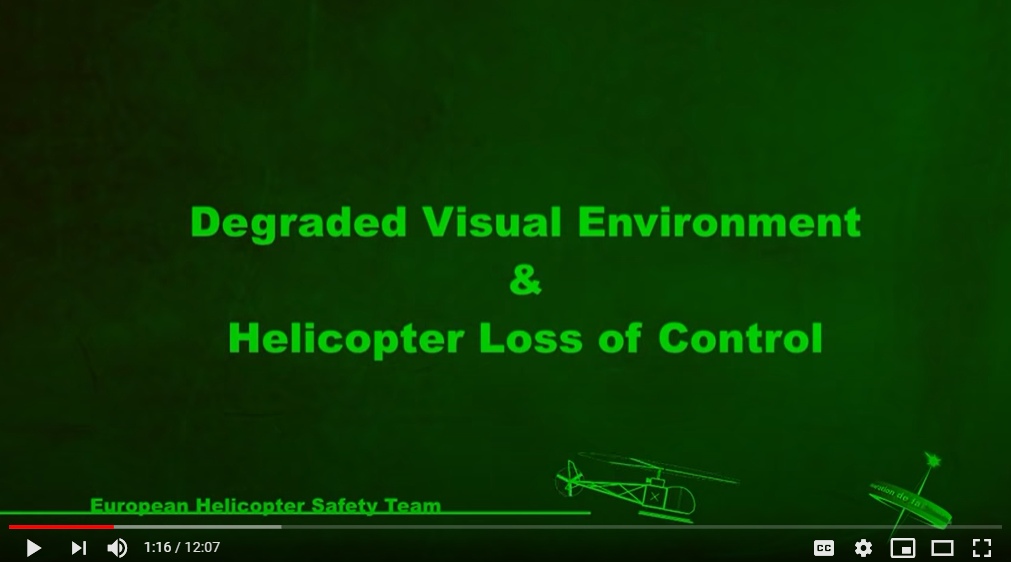
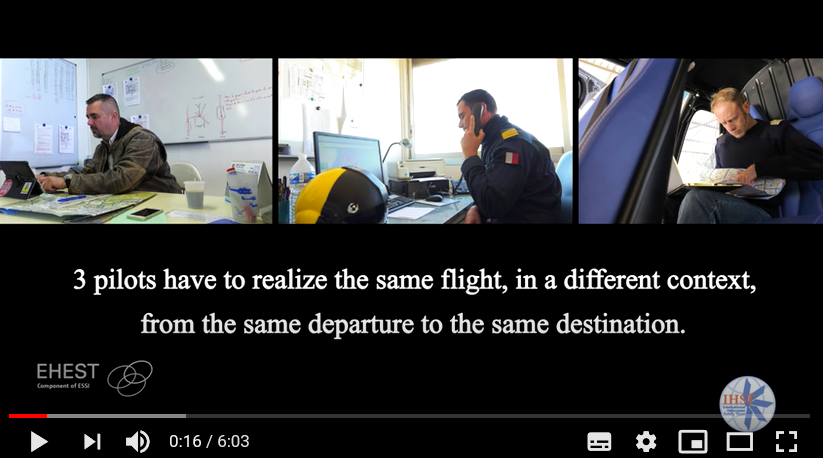
Airbus Helicopters “Airbus IIMC”

Airbus Helicopters “That Others May Live”
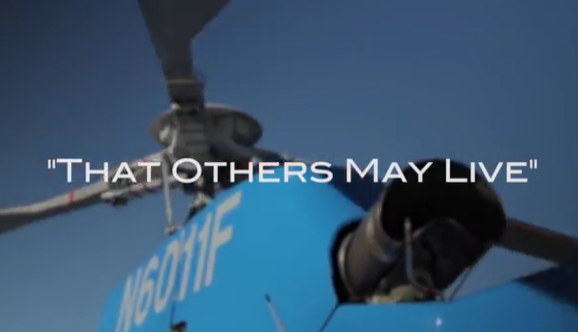
IHSF Reel Safety video Inadvertent Entry into Cloud
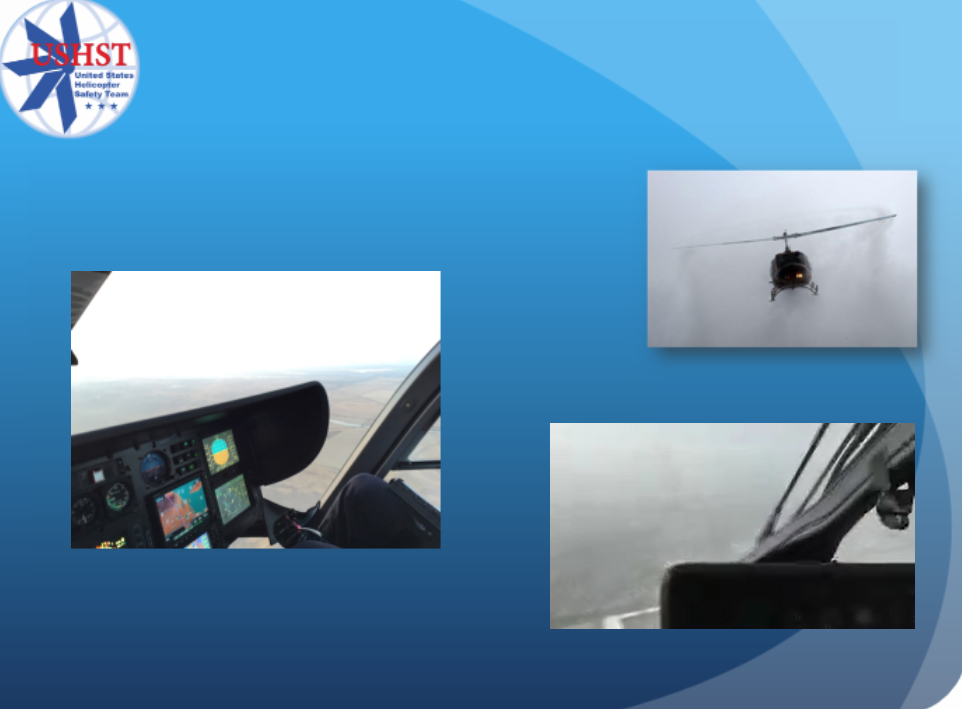

HAI Spotlight on Safety – Fly IFR the Right Way, or Stay on the Ground!
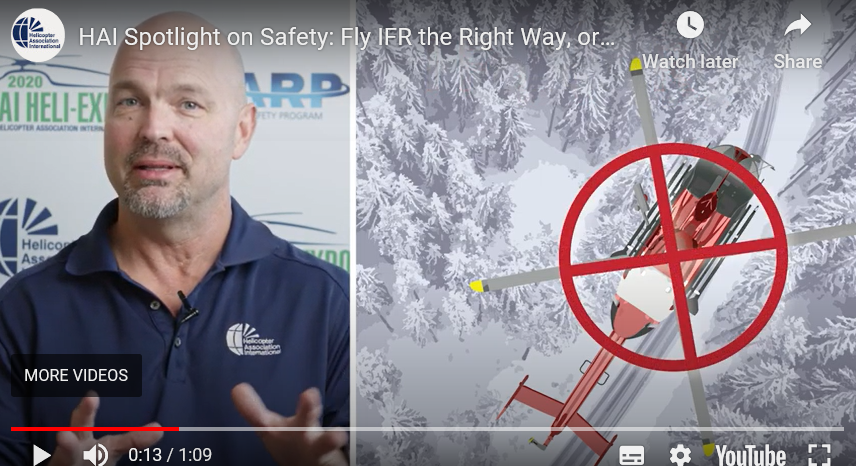
Robinson Helicopter Safety Notice 26: Night Flight - USHST Tim Tucker

AOPA Weather Wise: Beyond Go/No-Go
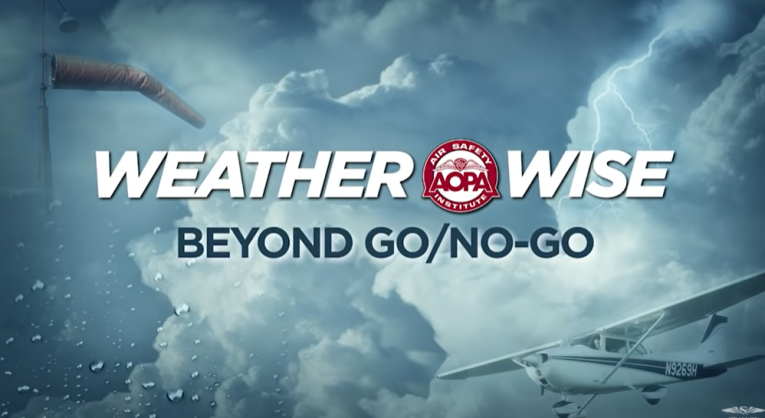
Watch also the other videos of the AOPA Weather Wise series.
USHST video 56 Seconds to Live (added in this article in Feb 2021)
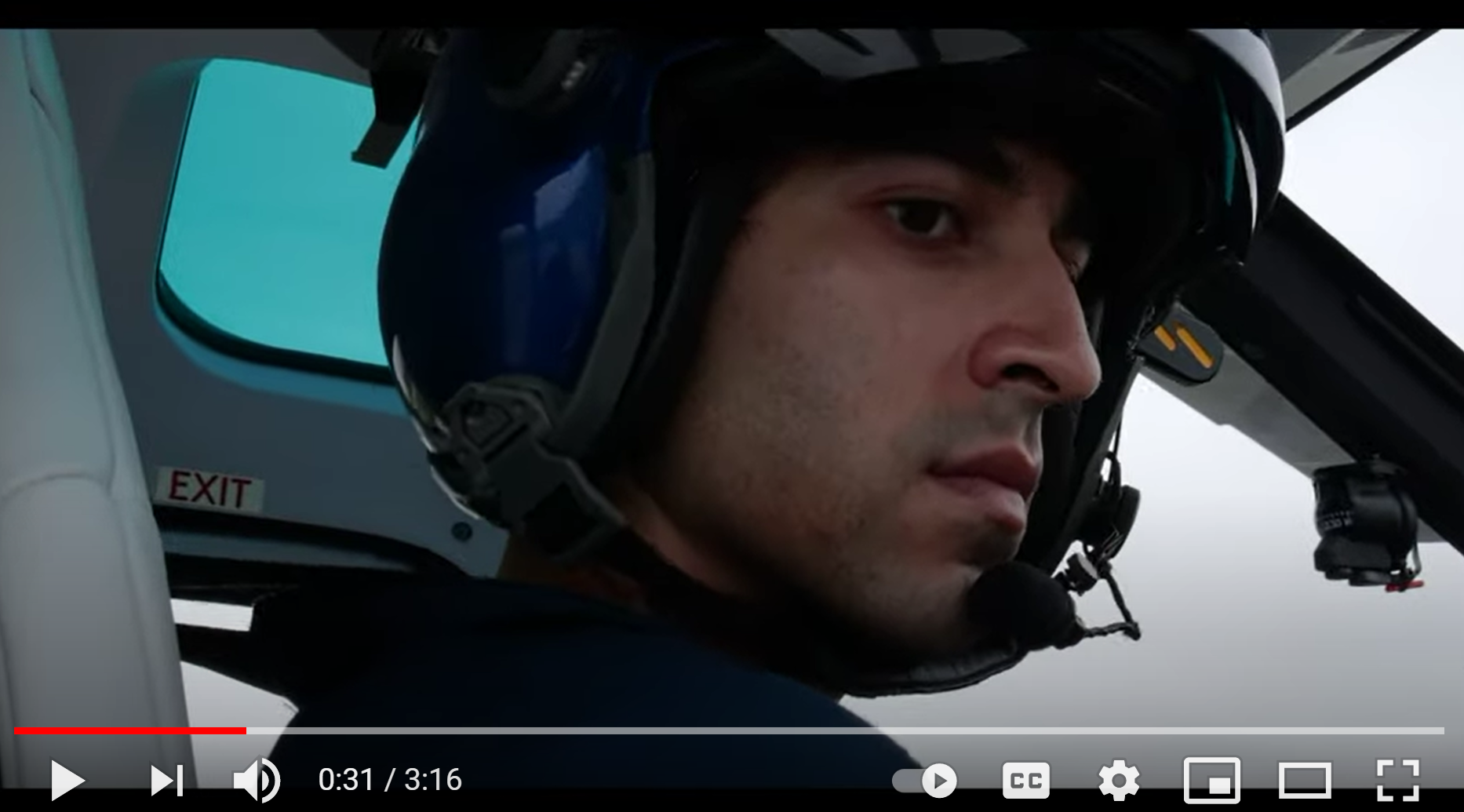
Live Another Day - Bruce Webb, Airbus Helicopters (added in this article in Feb 2021)

Imminent IMC (added in this article in April 2021)
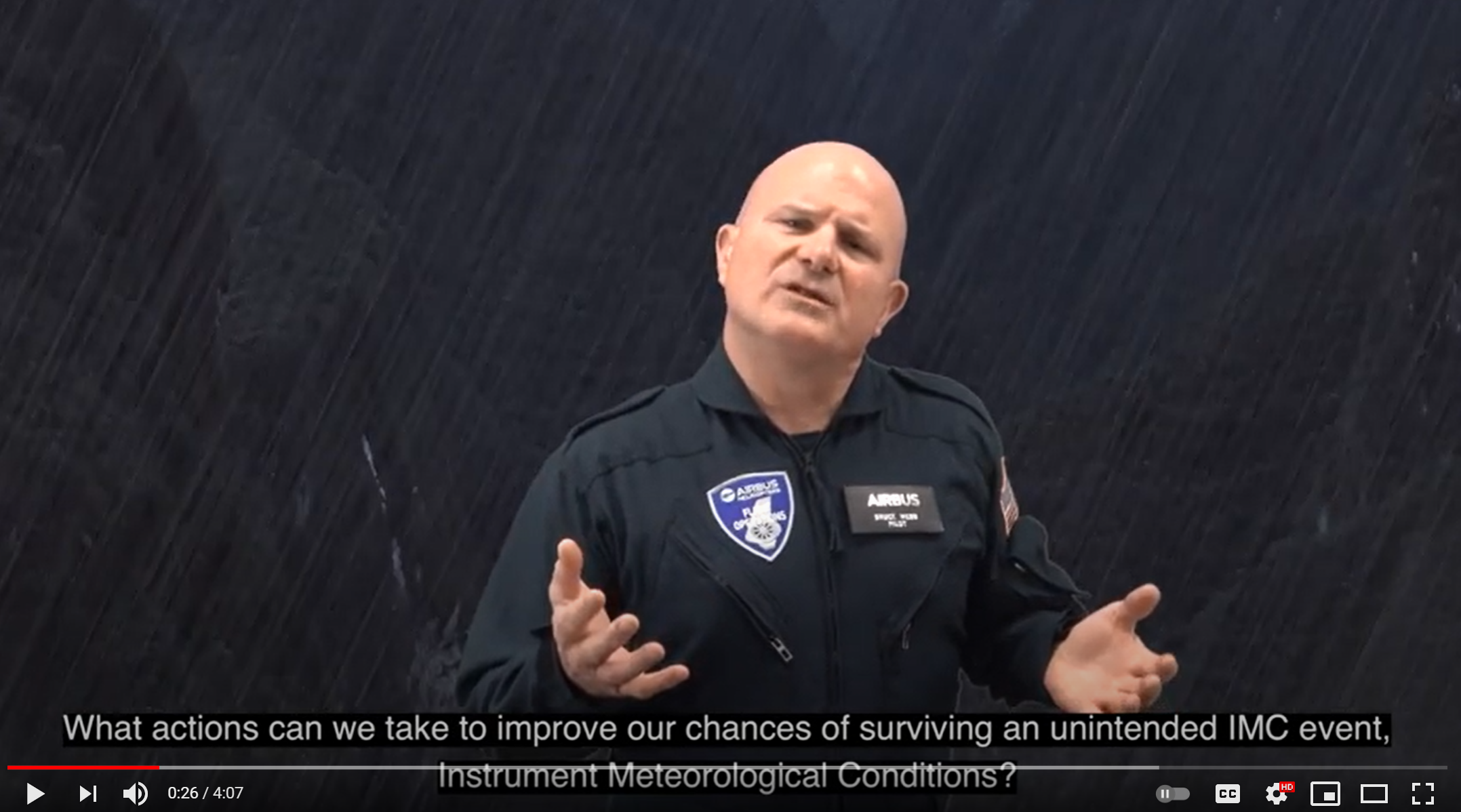
Bruce has also published other IMC-related videos on his YouTube channel, Bruce Webb’s Channel.
Safe flights!
Please log in or sign up to comment.